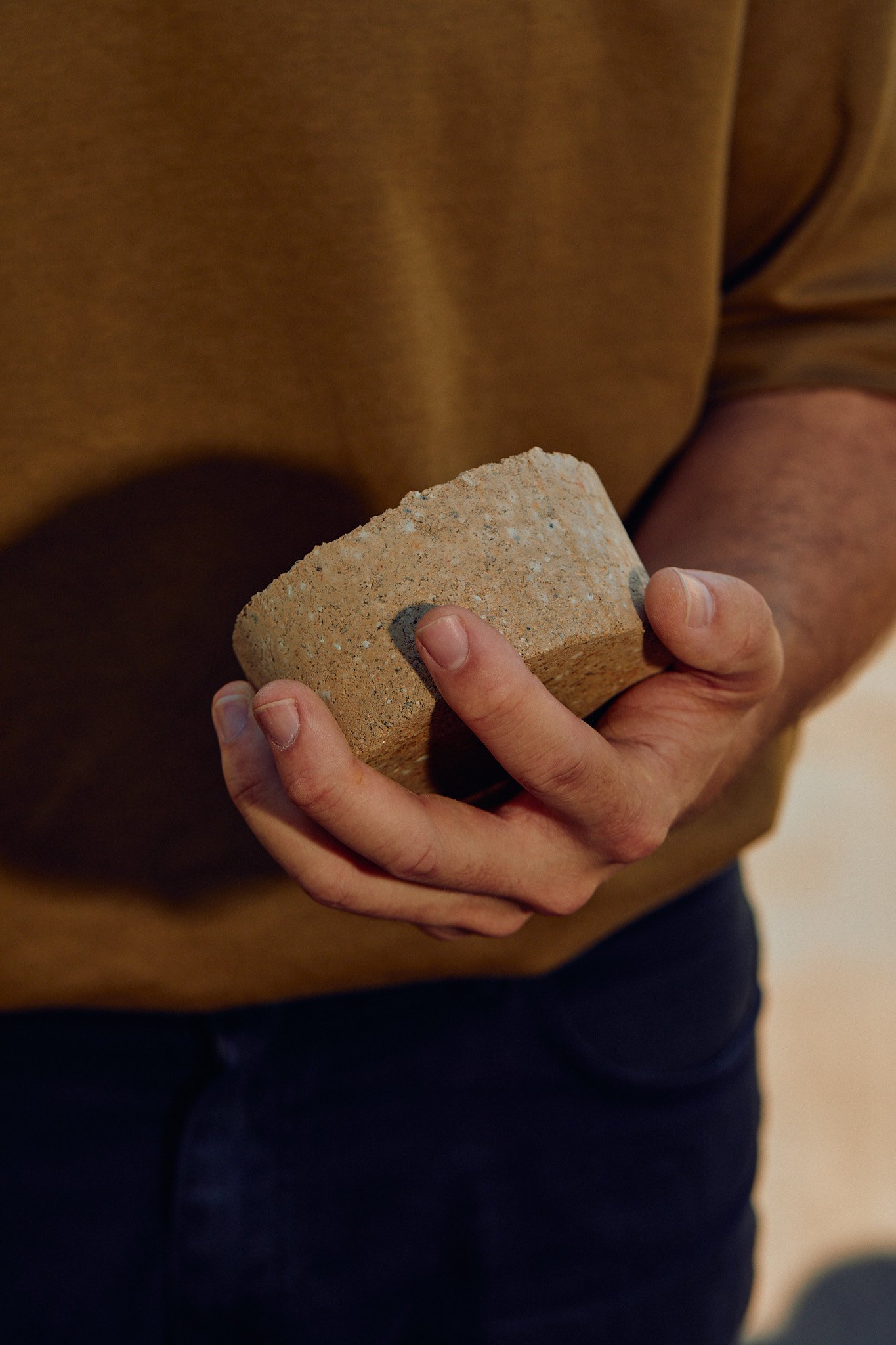
Craft Conversations
As a furniture and industrial designer, James Walsh is committed to researching ways to efficiently work with and repurpose waste materials with cultural and design significance. His Anthropic series is a retake on the age-old rammed earth construction method and uses recycled waste glass as an alternative structural property.
Can you tell us about the material that you have chosen to work with for this exhibition?
For this collection, I have chosen to repurpose recycled glass through the process of rammed earth. Unfortunately in Australia, there is an abundance of recycled glass that is being either stockpiled or put in landfills, as there is no major commercial use for the material at this stage.
By experimenting with this process and material I wanted to identify a better application for this waste glass that demonstrates commercial opportunities while also avoiding a manufacturing process such as glass blowing, which has a high embodiment of energy. Rammed earth consists of nothing more than compacted soil with a small percentage of concrete, and is traditionally hand compacted.
Despite not requiring industrial machinery, constructions produced using rammed earth have demonstrated remarkable longevity, with buildings lasting for thousands of years.
What is exciting about the material you are working with? / what is the biggest challenge?
The exciting element of rammed earth is always the layered effect that is produced in the making process.
As this material is produced in a closed mould it is only until the object is completed that you can remove the formwork and see just how beautiful the effect is. With the addition of recycled glass, this has only enhanced the effect. As with closer inspection, you will be able to see subtle glimmers of glass particles that catch the light.
For this project the biggest challenge was in finding the correct ratio of soil, glass and cement. This involved a thorough amount of sampling and testing with the use of a pneumatic ram for a controlled result.
How important is it for us to reflect and revaluate our approach to material in craft and design practice?
To me, that's just what I define design as being - a reflection of material and process.
In any project, I believe the material should be considered very carefully, as this influences the tone, the positioning, elements of sustainability and the look and feel.
What is the responsibility of the maker and their approach to material practice?
I feel all makers have a large responsibility when using materials, but I don't think that's limited to designers and artists.
Take for example the construction industry which is one of the world's largest consumers of materials and natural resources, and consequently a large producer of waste materials. As an industrial designer who has designed and developed commercial products for plastic injection moulding or glass moulding in the thousands, I feel I had a large responsibility in either designing the object as efficiently as possible, as desirable as possible, or to somehow make use of recycled materials in the production process.